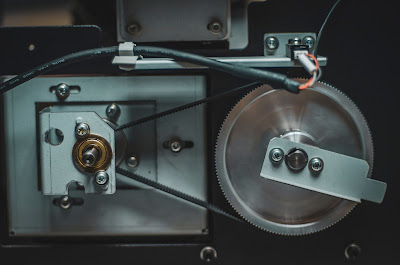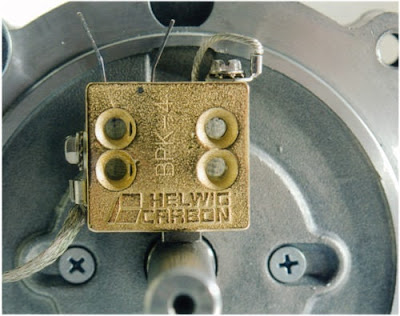How to optimize V-belt life?
V-belts are widely used in power transmission systems and are essential for the smooth operation of machinery. Their cost-effectiveness, durability, and low maintenance make them an attractive choice for many industries. However, like any other machinery component, V-belts require proper maintenance to perform their best and extend their lifespan. A poorly maintained or incorrectly installed V-belt can cause a host of problems, including excessive vibration, noise, and reduced operational efficiency. Optimizing V-belt life requires adherence to certain best practices and strategies designed to prolong the lifespan of the belts. In this blog post, we will explore the various ways to optimize V-belt life, including correct installation, proper tensioning, and maintenance practices. We will also discuss the factors that affect V-belt lifespan and how to identify warning signs of potential problems. By applying the techniques discussed in this post, operators can avoid costly equipment downtime, reduce maintenance costs, and ultimately extend the life of their V-belts.
1. Follow manufacturer recommendations for tensioning
One essential aspect of optimizing V-belt life is to follow the manufacturer's recommendations for tensioning. V-belts must be tensioned properly to achieve maximum efficiency and lifespan. When V-belts are correctly tensioned, they can transmit the required power without slipping or excessive force, which minimizes wear and tear on the belt and the pulleys. Failure to follow the manufacturer's guidelines for tensioning can result in premature V-belt failure or excessive wear, leading to decreased efficiency, increased maintenance costs, and costly downtime. It is important to note that different V-belts require different amounts of tension, and optimal tensioning may depend on factors such as operating conditions, pulley alignment, and power requirements. Therefore, it is crucial to consult the manufacturer's recommendations or a professional technician to ensure proper tensioning and maximize V-belt life.
2. Keep V-belts clean and free of debris
A key factor for optimizing the life of your V-belts is to keep them clean and free of debris. Dirt, dust, and other particles can accumulate on the surface of V-belts over time, leading to increased wear and tear. This can make them more prone to damage, and reduce their overall lifespan significantly. To keep your V-belts in top condition, we recommend implementing a regular maintenance schedule, which includes cleaning them on a periodic basis. During the cleaning process, make sure to use a soft cloth or brush, and avoid harsh chemicals that can damage the belt material. Additionally, if there are any signs of wear or damage, such as cracks or tears, make sure to address them immediately. By following these simple steps, you can help extend the lifespan of your V-belts and prevent unnecessary downtime and replacement costs.
3. Replace worn or damaged V-belts promptly
One of the critical steps to optimize V-belt life is to replace them promptly as soon as they are worn or damaged. Delaying the replacement of V-belts that are slipping, cracked or frayed is unacceptable and can lead to severe consequences in your equipment's operation. Worn or damaged V-belts can result in increased friction, heat generation and reduced power transmission, which can affect the lifespan of your V-belts and the overall performance of your equipment. Replacing worn or damaged V-belts promptly not only maximizes the life of your V-belts but also reduces the chance of breakdowns, unexpected downtime, and the possibility of more extensive damage to your machinery. Therefore, it is crucial to schedule regular inspections of your V-belts and replace them promptly when wear or damage occurs for optimal performance and longevity.
4. Avoid overloading or underloading equipment
To optimize the life of V-belts in your machinery, it is important to pay close attention to the condition of your equipment. One factor that can greatly impact V-belt performance is equipment loading. When a piece of machinery is overloaded or underloaded, it can cause excessive wear and tear on V-belts, leading to premature failure. To prevent this, it is crucial to ensure that the equipment is operating within its intended load range. Avoid overloading equipment by reducing the load on the machinery or by upgrading to a larger capacity machine. Underloading can occur when a machine is not being used to its full capacity, which can cause belts to slip, leading to additional wear and reduced lifespan. By properly loading your machinery, you can ensure that V-belts are not being put under unnecessary stress, ultimately leading to longer and more efficient service life.
5. Monitor V-belt performance regularly to detect issues early
Monitoring V-belt performance is an essential part of optimizing V-belt life. Regular checks can detect issues early and prevent catastrophic failures that lead to costly downtime, lost productivity, and safety hazards. These checks should include inspecting V-belts for any signs of wear or damage, as well as checking alignment, tension, and pulley condition. A visual inspection can reveal many potential problems, such as cracks, frayed edges, or glazing on the surface of the V-belt. In addition to visual inspections, regular tension measurements can help ensure that the V-belt is not too loose or too tight, which can cause premature wear or even breakage. By implementing a regular monitoring program for V-belt performance, you can ensure that your equipment operates at peak efficiency and avoid the costs associated with unexpected failures.
In conclusion, optimizing V-belt life is crucial for any machinery or equipment that relies on this type of drive. By following the recommended guidelines for installation, tensioning, and maintenance, you can ensure that V-belts operate at their maximum efficiency and longevity. It's essential to monitor belts regularly, replacing them if they show signs of damage or wear. Implementing the right V-belt drive design, along with proper care and maintenance, not only improves performance but also contributes to cost savings and prolongs the life of your equipment.



Megjegyzések
Megjegyzés küldése